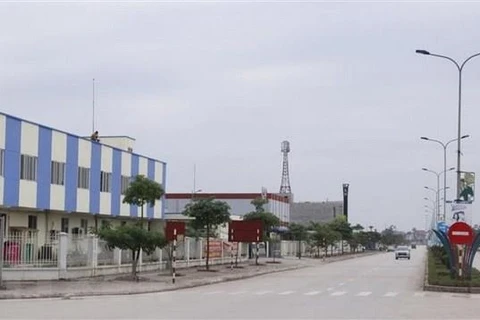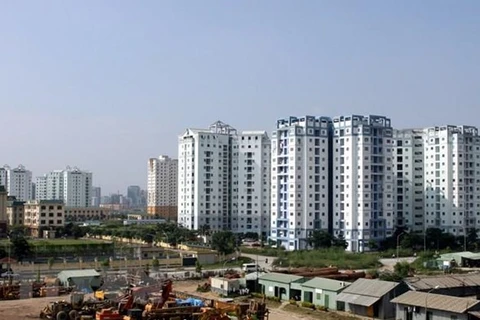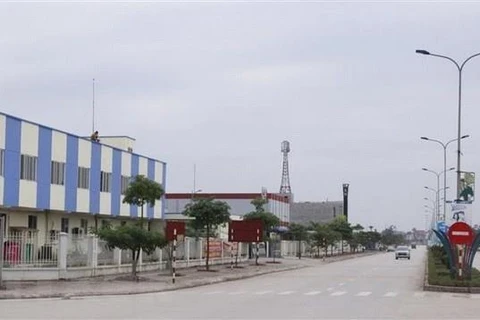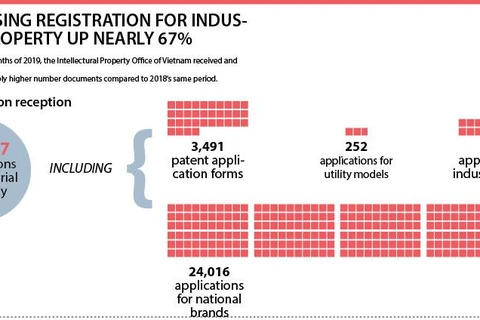Hanoi (VNS/VNA) - The supporting industry boosted the development of Vietnam's industrial real estate market last year, according to CBRE Vietnam Co, Ltd.
"The export-orientated manufacturing industry is the backbone of Vietnam’s economy, with various large businesses such as Samsung, Pou Chen Group, THACO Group and VinFast," Le Trong Hieu, director of the Industrial & Logistics Services at CBRE Vietnam said at a conference held in Hanoi earlier this week.
The most important impact of their production plants in Vietnam was forming and developing hubs for support industries and suppliers, he said.
In the automotive industry, Vietnamese private conglomerates, including THACO and Vingroup, have ambitious plans to create manufacturing complexes with concentrated chains of suppliers, according to CBRE Vietnam.
THACO Group has the 325-ha Chu Lai Trường Hải automotive complex in Quang Nam province, comprising a 100-ha automotive component industrial park. Targeting a 40 percent localisation rate, THACO is cooperating with experienced foreign suppliers to develop more than 11 component factories, providing auto parts for assembly and export.
Vingroup has launched the 335-ha VinFast automotive complex in Hai Phong, which is home to the most modern auto and auto parts factories in Vietnam.
"Industrial property developers can now open ready-built factories focusing on support industries, along with the application of technology in industrial property management," Hieu said.
Leading developers in the ready-built factory sector, such as BW Industrial, KTG Industrial and An Phat Holdings, are ready to welcome new component manufacturers and suppliers.
Dang Trong Duc, KTG Industrial’s Sales Development Director under the Khai Toan Group (KTG), said Vietnam's industrial real estate sector had seen strong development in recent years, especially 2019, due to globalisation, political stability and infrastructure development, including highways and system of seaports.
Hieu from CBRE Vietnam said: "The strong development of the domestic industrial property market in 2019 was mainly due to the Government’s large investment in infrastructure, including seaports, highways and airports.
"Vietnam has signed free trade agreements with many partners to promote exports, increasing demand for production and warehouse facilities in Vietnam.
In addition, the US-China trade war has promoted Vietnam’s industrial property,” said Hieu. This has made companies in China want to move to neighbouring countries, avoiding US taxes.
Moreover, the cost of production in China continued to rise, expediting the relocation process to alternative locations in Southeast Asia, including Vietnam, he said.
The recent surge in demand has made the country’s industrial property market more vibrant than ever, according to CBRE.
The average occupancy rates of industrial parks in northern and southern localities were over 92 percent and 80 percent, respectively, at the end of 2019.
When there is limited vacant land, developers of existing industrial parks tend to switch to ready-built factories, which are more time and cost efficient to tenants who prefer a speedy setup.
In 2019, southern regions and cities in Vietnam, including HCM City, Binh Duong, Dong Nai and Long An, welcomed about 380,500 sq.m of ready-built factories, up 18.9 percent year-on-year.
Meanwhile, the new supply in the northern region, including Hanoi, Hai Phong, Bac Ninh, Hai Duong and Hung Yen, was 321,420 sq.m – up by 25.2 percent y-o-y.
The rapid occupation of ready-built factories is a strong basis to believe that the outlook for this type of industrial property is very positive, Hieu said.
Hanoi’s market
On the same day, CBRE Vietnam released a report on Hanoi’s property market in the fourth quarter of 2019, showing strong growth in the condominium market.
Last year, Hanoi's condominium market continued to maintain a high level of new launches, with around 36,000 units offered.
The mid-end segment accounted for 80 percent of total new launches in 2019, higher than the average rate of 40 percent in 2010-14 when affordable apartments were the most popular products.
The highlight of last year was the dominance of products from mega projects such as Vinhomes Ocean Park, Vinhomes Smart City and Park City. New launches from those projects covered more than 50 percent of total new launches.
The market saw more than 29,000 units sold during 2019, up by 1 percent year-on-year, according to the report.
Demand from foreign buyers was one of the drivers leading to positive sales performance in Hanoi, especially for projects in good locations in western and West Lake areas.
“Previously, the number of foreigners buying houses in HCM City was more than in Hanoi. But in 2019, the Hanoi market welcomed a higher number of foreign buyers than HCM City, mainly Korean customers. There were also customers from other Asian countries like Singapore or Japan. Foreign tenants also increased,” said Duong Thuy Dung, Senior Director and Head of Research and Consulting at CBRE Vietnam.
“Foreign companies have expanded their operations in Hanoi and neighbouring localities, increasing the number of foreigners buying and renting houses in the capital city.”
The average selling price in the primary market in the fourth quarter rose by 5 percent year on year to US$1,370 per sq.m. Projects in urban areas, with comprehensive amenities and completed infrastructure, had higher prices compared with the average price, especially in Gia Lam, Long Bien and Ha Dong.
In 2020, mid-end products are expected to dominate the market with new launches in urban regions. For upscale segments (high-end and luxury), it is forecasted that there will be more offerings from this segment this year./.
VNA

























